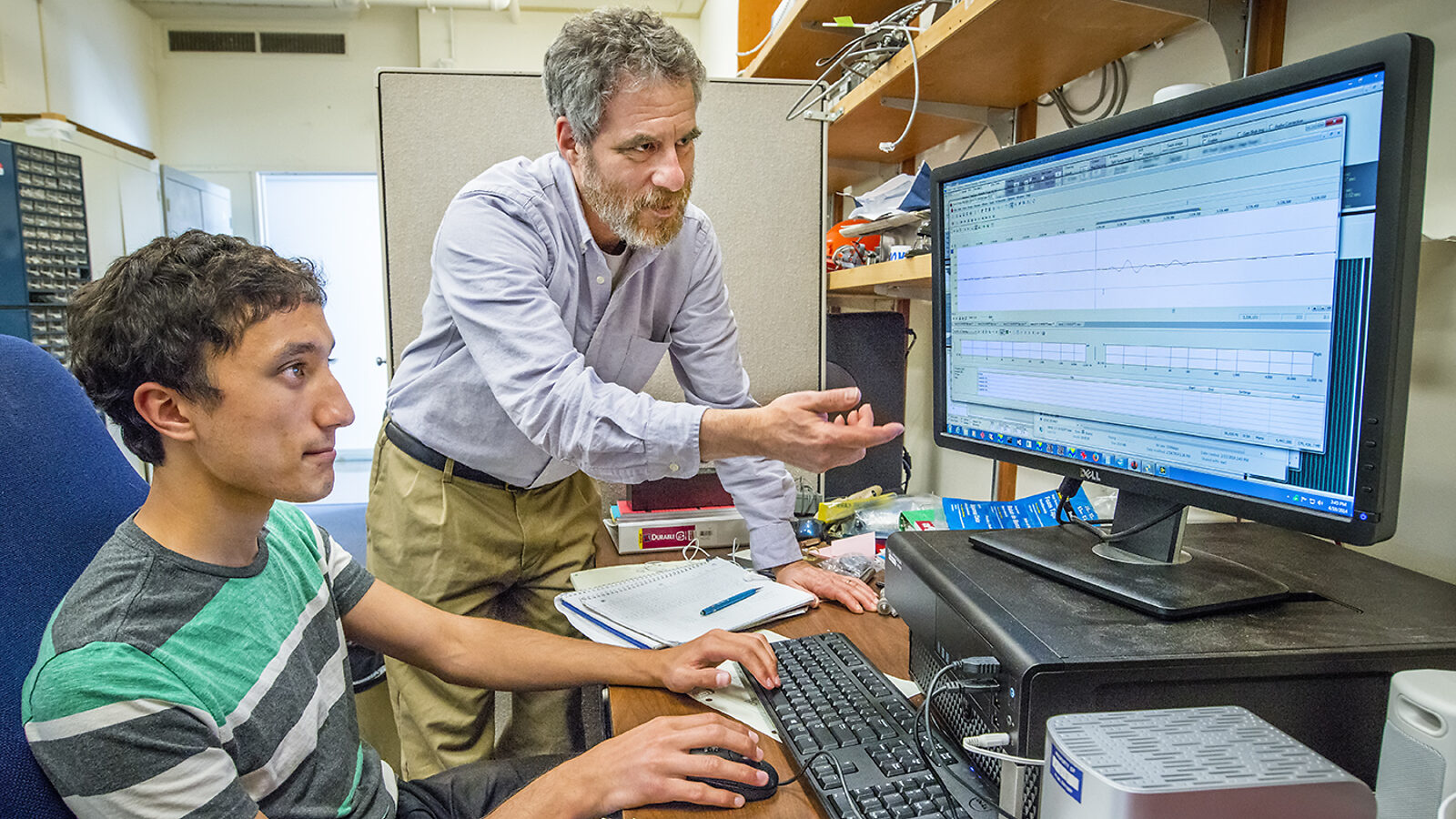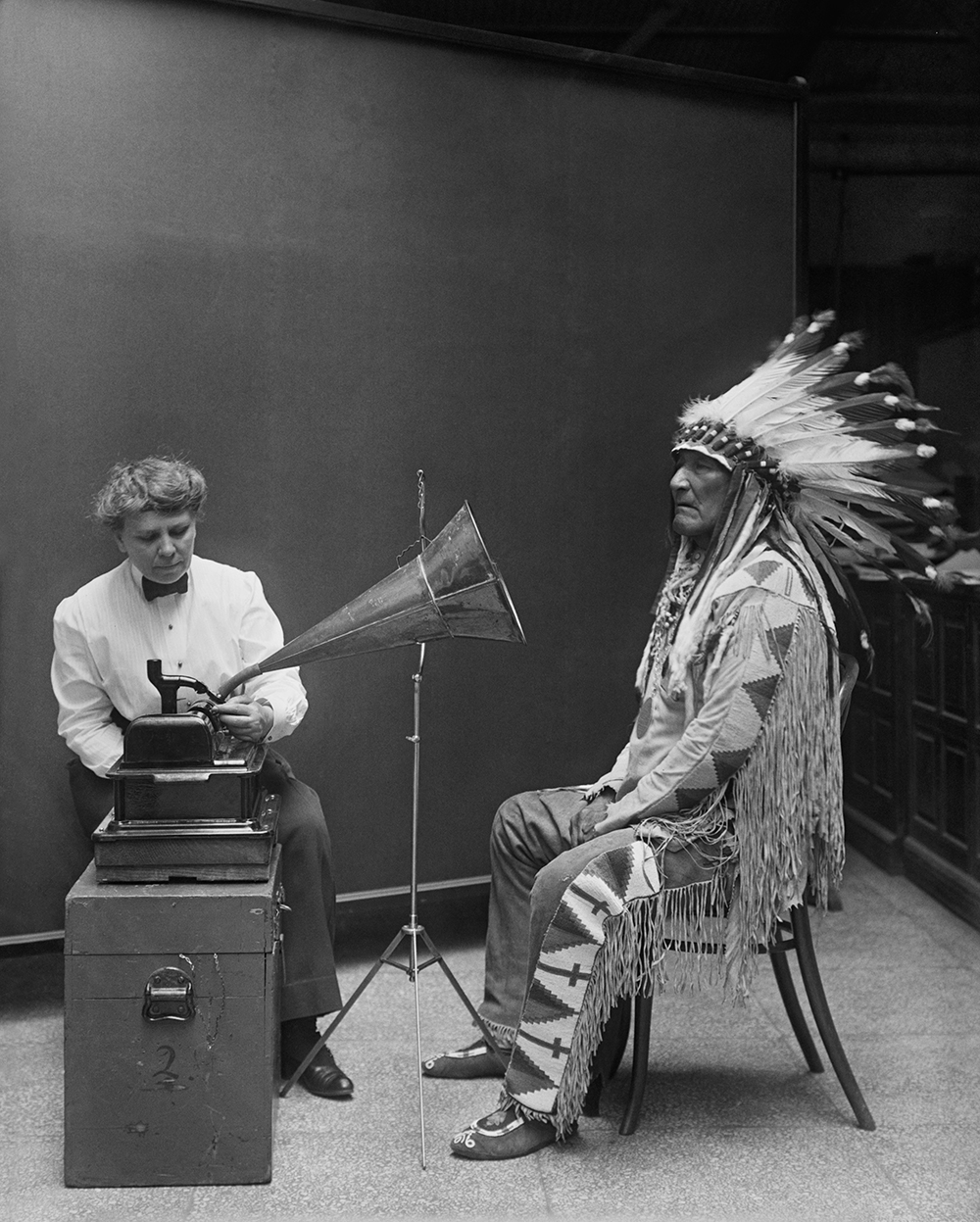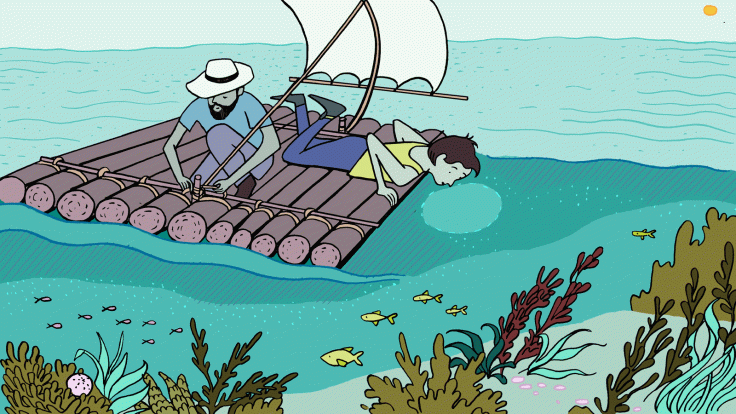Berkeley physicist Carl Haber listened in astonishment as the first notes of the 1950s hit “Goodnight Irene” played through his computer.
“It was one of those moments you remember your whole life,” Haber says.
The song came from an old record, but no needle traced its grooves. Haber wasn’t listening to the record; he was listening to an image of the record, which then-postdoc Vitaliy Fadeyev had produced by scanning it with a high-powered microscope. A set of mathematical algorithms then interpreted the trenches embossed on the record’s surface and translated them into sounds.
Haber and Fadeyev were neither preservationists nor audio experts. Rather, they were, and still are, both particle physicists working on the ATLAS experiment, a cathedral-sized particle detector located on CERN’s Large Hadron Collider. Haber is at Lawrence Berkeley National Laboratory and Fadeyev is now at the University of California, Santa Cruz. They specialize in designing the delicate silicon detectors that record the charge, trajectory and momentum of particles produced immediately after the high-energy proton collisions.
In order to pick out particles like the Higgs boson from the cacophony of noise created during the high-energy collisions, the LHC detectors must be extremely precise—so precise that the inner detectors can distinguish between two particles separated by the width of a human hair.
To make these detectors, physicists use optical imaging to determine the shapes of the components. Then they apply mathematical algorithms to analyze the components’ dimensions and specialized machinery to piece them together with the precision of a few micrometers.
“It is a very powerful technique,” Haber says, “and I was very interested in what other applications it could have.”
Haber got his answer in the early 2000s on one of his many trips between Berkeley, where they were assembling the ATLAS detectors, and Silicon Valley, where he was purchasing detector materials and fabricating detector components.
“I was driving and my brain was swirling with all these thoughts of imaging, analyzing and processing,” Haber says. “I was thinking about its applications, when I heard an interview on the radio with Mickey Hart.”
Mickey Hart, the legendary drummer from the Grateful Dead, is an ethnographer and a huge proponent of preserving the heritage of music. During this radio interview, Hart explained that there are thousands of old recordings cataloging the music, language and culture of at-risk indigenous communities. But these recordings, Hart explained, are stored on archaic, sometimes warped or broken material.
“And I thought,” Haber says, “if you could take a recording and turn it into a picture, then you could extract the information by using these mathematical approaches we were applying to our physics research.”
Early ethnographers made sound recordings using a diaphragm attached to a needle. When the diaphragm felt a sound wave generated by a voice or instrument, it vibrated, much like a human eardrum. These vibrations moved the needle, which inscribed the motions into a soft, rotating, material—like wax or aluminum.
“Tens of thousands of these recordings are stored in the Library of Congress, the Smithsonian Institution, and numerous archives and collections worldwide, but many of them are old, fragile, and in some cases, completely unplayable,” Haber says.
He encouraged Fadeyev to help him test his idea.
Fadeyev used traditional two-dimensional imaging to create a digital high-resolution map of the surface of the recording “Goodnight Irene.” After this first successful experiment, Haber and Fadeyev wrote a paper and sent it to half a dozen archive centers. Almost immediately, they received a response from the Library of Congress and were invited to Washington, DC.
After two days of detailed discussions, Haber and Fadeyev returned to Berkeley with a much better idea of what they needed to do to bring these old recordings back to life. Over the course of the next decade Haber worked with Berkeley engineer Earl Cornell to further develop the technology and use it to lift voices from figure like Alexander Graham Bell, Jack London and Janis Joplin from unplayable recordings.
This summer, Haber and Cornell are partnering with the UC Berkeley Linguistics Department and the UC Berkeley Libraries to start the biggest project yet—scanning and extracting sound from the 2700 wax cylinders stored in the University of California Phoebe Hearst Museum of Anthropology that document the culture, language and music of dozens of Native American tribes from California.
“These cylinders contain precious cultural artifacts, and we hope this project will make these songs and languages accessible in the communities they belong to,” says Berkeley Professor of Linguistics Andrew Garrett.
The wax cylinders Haber and his colleagues will be working with for this new project preserve sounds in grooves at varying depths. For these recordings, Haber uses a confocal microscope, which plays with focus and depth-of-field to determine the depth of the groove as it curves around the cylinder.
Preservationists tried to extract the sounds from these wax cylinders in the 1970s by recording them onto tapes. But that solution left a lot to be desired, according to Garrett.
“The existing transfers are very noisy, and it is often impossible to even tell there is speech, let alone make out what is being said,” Garrett says. “We’re hoping that these new recordings will be of a high enough quality that a fluent speaker could actually understand what’s being said and that people can hear the songs well enough to learn them and perform them.”
After this project, Berkeley librarian Erik Mitchell hopes to apply this technique to help preserve other collections of grooved media.
“Preserving records is a huge deal in our field, and digitization is still an emerging field,” Mitchell says. “It’s really exciting to be part of something that we can replicate with other special collections stored in libraries and museums around the word. It’s a great opportunity and has a broad interdisciplinary impact.”








